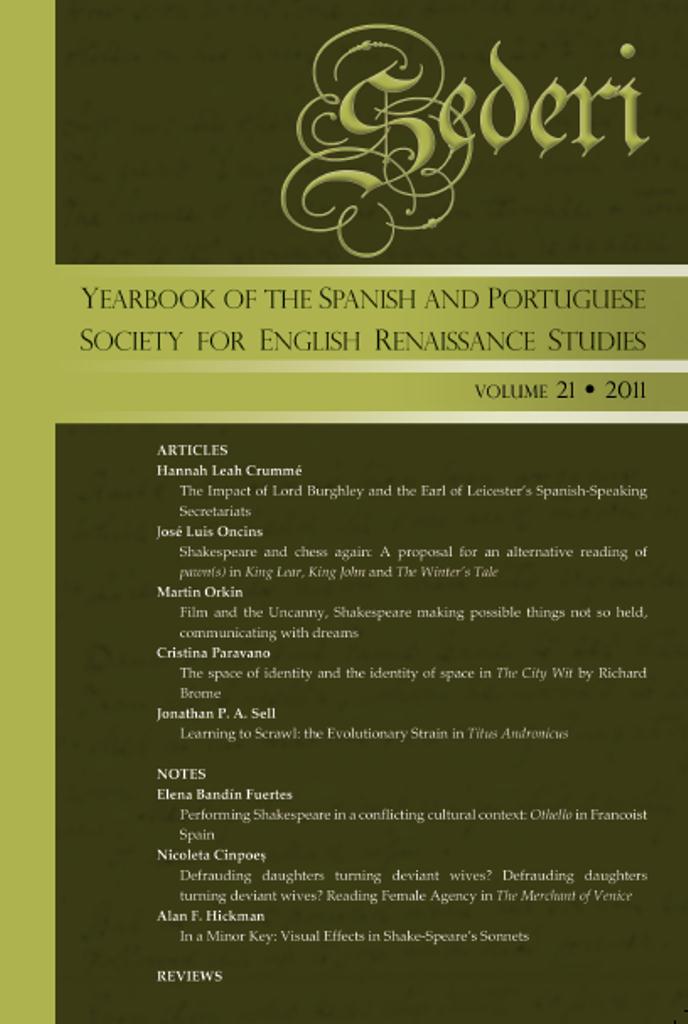The Space of Identity and the Identity of Space in The City Wit by Richard Brome
Keywords:
space, identity, fashioning, geography, genderAbstract
My paper examines The City Wit (1629-1632), a city comedy by Richard Brome revolving around the unscrupulous trade world, where all the characters aim at social recognition, even trampling on feelings and moral values. My objective is to investigate the play as one of the earlier examples of strategic use of space in Brome’s dramatic production. Firstly, I will consider the function of space in relation to the identity of the single characters. Secondly, I will show how space can be manipulated for the re-fashioning of a new identity, as in the case of Jeremy, a male servant disguised as a widow, who builds up a fictitious Cornish identity. Finally, I will analyze the geography of the play focusing in particular on the scene set in the Presence Chamber of Whitehall.
Downloads
Downloads
Published
Issue
Section
License
The copyright holder of the published contributions is SEDERI.The hardcopy and an open-access version of the journal will be published simultaneously. The issues will be available online in the SEDERI website (http://www.sederi.org/yearbook/) and other repositories that have signed an agreement with SEDERI.
The authors who publish with this journal agree to the following terms:
a) SEDERI retains copyright of the essay.
b) If the author wishes to republish or rewrite the essay for another journal, or include the essay published in SEDERI in their personal repositories, or in any other way, they should contact the editors to obtain permission to do so. This will entail citing SEDERI as the original source and sending the editors a copy of the new version, or the link to the website, in case of online publishing.
The author(s) hereby warrant(s) that:
a) The essay submitted for publication is an original creation and does not infringe any copyright or property right of another journal, author or publisher.
b) The essay submitted for publication has not been previously published, whole or in part, and is not being considered for publication elsewhere.
c) Written permission has been obtained for any material from other sources included in the essay submitted for publication.




